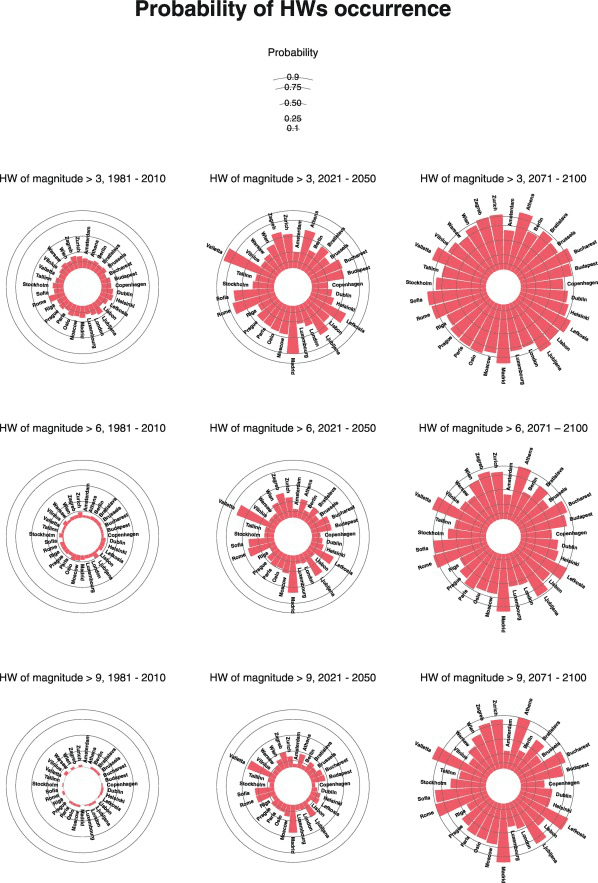
Heat has emerged as one of Europe’s greatest enemies. In the new series ‘Europe battling heat‘, IO finds out how cities (can) arm themselves against it. Today: the harsh reality of urban heat islands in Europe.
To the mountains or the seaside, that’s the dilemma of many when choosing where to go on holiday to escape summer’s urban heat. Cities are becoming increasingly hotter, with unbearable temperatures in some cases, as heat is trapped within the different blocks of a metropolitan area.
IO´s last summer’s series on how Dutch cities cope with heat stress underlined how greenery and water basins are the keys to cooling cities by a few degrees. Trees, ponds, rivers, and lakes help establish proper oases within urban jungles made of concrete and asphalt.
- As the south of Europe is in the grip of a record heatwave, city temperatures are higher than the ones measured in rural areas.
- Athens, also battling with the threat of wildfires, appointed a chief heat officer and is taking several actions to battle extreme heat.
- Southern Europe cities will be the ones suffering the most from recurring heatwaves, but the whole of Europe will experience extreme events more often.
The hottest areas within a city are those built up the most. Roads, dwellings, and other infrastructure retain and re-emit sun heat. These zones of a city are defined as heat islands. Given the density of buildings, these areas trap heat and are hotter by a few degrees compared to other parts of the same city. It’s not only a matter of high building concentration and a low vegetation presence. Tall buildings, for instance, especially when concentrated, don’t allow air to circulate freely, making it stagnate more. Not to mention that vehicles and industry plants’ exhausts also contribute to surging downtown temperatures.
Southern Europe in the grip of a heatwave
The powerful impact of heat islands was brought to the fore as the aerial scans of some European cities taken by NASA’s ECOSTRESS went online last year. The snapshots – taken on June 18, 2022 – showed different temperature deltas between other parts of a city. In Paris, the Pantin cemetery and the Paris Expo were marked as the areas with the hottest land surface temperatures – reaching 48°C (118.4°F). Milan’s hottest areas were the covered food market and the station railway lines, while the world-famous vertical garden and the central Sempione park pop up on the map as areas with a lower Land Surface Temperature (LST).
This year’s measurements aren’t any better, as the Charon heatwave is setting record-high temperatures in southern Europe. July 18, 2023, will be remembered as the day when the highest temperature on record was reached in Rome at 42.9°C (109.2 °F), as some locations in Sardinia, Puglia, and Sicily got up to 46°C (114.8 °F). Madrid and Athens weren’t any cooler, with LST values over 40°C across the whole urban area, as shown in the Copernicus snapshots taken on the same day. On that day, several Eastern Europe capitals also recorded over 35°C.
Athens’s heat strategy
A recent research paper on Nature estimated that over 61.000 people died from last summer’s heat waves across Europe. The study showed that Italy, Spain, and Greece had the highest heat-related mortality numbers. Therefore, the researchers called for “a reevaluation and strengthening of existing heat surveillance platforms, prevention plans, and long-term adaptation strategies.”
Athens was the first European city to appoint a Chief Heat Officer (CHO). “The CHO needs to ensure that the huge heat problem doesn’t remain under the radar, as it is now. Discussions and courses of action on climate revolve around problems such as floods and wildfires but rarely about heat. As if heat isn’t also part of the problem,” said former Athens CHO Eleni Myrivili in a previous interview with Innovation Origins.
A CHO also works as a director of urban heat management, working on a city climate action plan and creating green and blue infrastructure city projects. The Greek capital is one of the most densely built cities on the continent, thus suffering the most from the heat islands problem. Since then, several actions have been taken.
Europe battling heat
Europe is breaking heat record after heat record this summer. ESA predicts temperatures of 49 degrees, the ground temperature in Spain soared above 60 degrees Celsius, and more than 60,000 people died from heat in 2022.
Something is going wrong. That the earth keeps warming up, for a start, but besides that, EU member states’ heat plans are insufficient, while the need for them is growing.
In the series ‘Europe battling heat’ the central question is: how does Europe arm itself against heat? In the coming weeks, you can expect an article every Wednesday in which Innovation Origins solves a piece of that question. Today: the harsh reality of urban heat islands.
Pocket gardens and the coolest walking routes
Although Greece and the city of Athens have been painting buildings in white to keep them cooler, more is needed with consistent over 40°C temperatures. “If you see the projections for the next few decades are dramatic, we will be in constant heat conditions in the summer. We need to adjust our way of life into this heat and adapt,” told Euronews Elissavet Bargiani, Athens’s CHO.
Therefore, the city set up a plan to rework the city and bring to the citizens’ attention the problem. One of the initiatives was the creation of ten “pocket parks” in previous wasteland areas within the city. There, greenery cools down temperatures in built areas. Another action is creating an app – called EXTREMA Global – where people can find the coolest walking routes. The app’s algorithm leverages satellite data and calculates tree density along the route, suggesting the freshest itinerary to follow.
In addition, the city has a cool center in each of its seven districts. These are free-to-access open spaces where people can cool down.

Heat waves to impact the whole of Europe
Looking ahead, we know that heat waves will be more frequent, but what European cities are prone to them? A 2019 study from Universidade NOVA de Lisboa and the European Commission ranked European capitals (plus Moscow, Oslo, and Zurich) by exposure to heat and cold waves. Moreover, they classified the phenomena by severity, calculating the occurrence of different magnitude events in light of the foreseen increase in the global mean temperature.

The first conclusion is that in the near and distant future, Mediterranean and Iberian peninsula cities won’t be the only ones exposed to extreme heat events. Severe, extreme, and very extreme heatwaves have increasing probabilities of occurrence from 2021 to 2050 to 2071–2100 in most European cities. Still, cities like Lefkosia, Madrid, or Valletta will remain the most prone ones. Still, as global temperatures soar, the probability of facing sweltering temperatures will be higher in cities like Vienna and Zurich.
Therefore, all European cities must plan to adapt to the emergence of more heatwaves. In doing so, combating heat islands should be the top priority of the list, and several innovative practices exist. We’ll tell you more in an upcoming episode of Europe battling heat.








